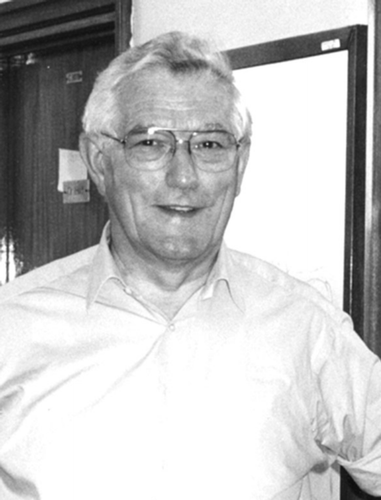Professor Kenneth Johnson Toyne 1937–2011
Professor Ken Toyne passed away peacefully, following a short illness, on 24 January 2011 in his home city of Hull, UK, aged 73 years. He is survived by his wife, Jennifer, and his three children, Mandy, Sarah and Alison, and his six grandchildren, Ruby, Alfie, Nikos, Betty, Marcos and Ellie.
Ken was born in Hull on 8 March 1937, and grew up in a working class environment in the war-torn city. In 1948 Ken was awarded a state scholarship to Hymers College, a prestigious public school in Hull. In 1955 Ken left his home city of Hull for the University of Manchester to study for a BSc degree in chemistry. In 1958 Ken returned to Hull to take up the position of Demonstrator in the Department of Chemistry at the University and to study for a PhD entitled ‘Conformation and Reactivity of Cyclohexane and trans-Decalin Carboxylic Acids and Esters’ under the supervision of Professor Norman Chapman and Dr John Shorter. In 1962 Ken was awarded his PhD and progressed to the academic position of Assistant Lecturer in Organic Chemistry.
Ken was a superb teacher, mentor and supervisor. Equally at home in the lecture theatre and the laboratory, Ken made a huge difference to all those he taught and worked with; he was always there, so reliable, so willing and able to help. With his wealth of knowledge, attention to detail and his clear manner of explanation, Ken guided his students and researchers to the highest levels.
Ken absolutely loved his research activities. As an articulate and gifted academic, and a skilful, creative and inventive synthetic organic chemist, Ken made hugely significant and original contributions to many areas of chemistry, but in particular to liquid crystals. In his early career, Ken focused on the area of alicyclic (cyclohexane), fused cyclics (decalins), bicyclics (bicyclooctanes) and cage systems (cubanes and adamantanes). In the late 1970s Ken became part of the expanding liquid crystals research group at Hull headed by Professor George Gray. One of Ken's many great strengths was his innovation in the design and synthesis of liquid crystals, and his research spanned many areas including nematics, chiral nematics, ferroelectrics (achiral hosts and chiral dopants), antiferroelectrics, chirality, discotics, metallomesogens, macrocycles and polymers.
Of particular note, as part of the Hull, Ministry of Defence (UK) and Merck collaboration, Ken invented the 1,2-difluorophenyl class of liquid crystal – a revolutionary design of liquid crystal, which in various analogues and homologues, provides excellent ferroelectric host materials for liquid crystal on silicon (LCOS) microdisplays, and far more advantageously and commercially successfully nematic mixtures for vertically aligned (VAN) mixtures for large area, high definition television applications. Connected to this invention Ken led the development of the so-called Suzuki coupling reaction to high levels of applicability. This type of chemistry is now widely used in the synthesis of a vast range of compounds, including pharmaceuticals and of course liquid crystals. In 2010 Suzuki was awarded the Nobel Prize for Chemistry for this coupling methodology – a prize, at least in part, brought about by Ken's significant contribution in liquid crystals.
Ken had a long, successful and enjoyable career in research and teaching within the Department of Chemistry at the University of Hull, reaching the very top position of Professor of Organic Chemistry. After George Gray's retirement in 1990, Ken was the rock upon which the Liquid Crystals Research Group at Hull continued to thrive, headed by John Goodby. In his professional life Ken was always most self-assured and confident, very much a tower of strength, but he was very modest, never one to blow his own trumpet. Ken seemed not to accept his massive contributions and awesome achievements, but of course he knew, and so did all those who knew him.
Ken was a great man who made a huge positive impact on all those who knew him. Ken was a great man who will be sorely missed and will always be in our hearts and minds.
Mike Hird
Department of Chemistry, University of Hull,
Hull, UK
